Front axel shaft seal - leaking due to incorrect sizing?
#11
Hi
g'day,
One thought on this, is the CV joint running true and not eccentric? or has it been replaced since the original seals were replaced? It might be worth putting a dial gauge on a magnetic block on the hub to check the CV and rotate the shaft to check any runout. It seems odd that the seals are wearing out and I can only guess it's some eccentricity in the shaft/CV causing it. Worth a check in any event.
g'day,
One thought on this, is the CV joint running true and not eccentric? or has it been replaced since the original seals were replaced? It might be worth putting a dial gauge on a magnetic block on the hub to check the CV and rotate the shaft to check any runout. It seems odd that the seals are wearing out and I can only guess it's some eccentricity in the shaft/CV causing it. Worth a check in any event.
#12
One thought on this, is the CV joint running true and not eccentric? or has it been replaced since the original seals were replaced? It might be worth putting a dial gauge on a magnetic block on the hub to check the CV and rotate the shaft to check any runout. It seems odd that the seals are wearing out and I can only guess it's some eccentricity in the shaft/CV causing it. Worth a check in any event.
Whilst I was in there I thought it best to replace the axel seals to prolong their life.
I assume and hope that the Ashcroft products were manufactured correctly. It is both sides that are destroying the seals. Although the drivers side lasted longer than the passenger side - one side was fitted with a Britpart brand seal (sourced from Britcar who claim Brtipart is the OEM supplier for this part < FTC4822 | OIL SEAL DRIVESHAFT P38 NEW RANGE ROVER | Britpart | Discovery 2 - 1999 to 2004 | Britcar (UK) Ltd >) and the other was fitted with a genuine Land Rover part supplied by Tilford the Hobart Land Rover dealer - I'm not 100% certain, but I believe the genuine LR seal was the first to fail.
As you may be aware the D2 shares this seal with the P38A RR. The original part number for the seal was FTC 3452. Due to leaking issues from the damaged seals these were redesigned into the FTC 4822 seal that are fitted to D2's (the change over occurred on 30/10/1996, well prior to the D2). So what LR did was make the seal in two parts so that it has the ability to have some movement - that's why the body of the seal is now the two metal parts.
The first page of the TSB is viewable at http://www.jeepolog.com/forums/attac...0&d=1397899310
There's a good description of the change in RangeRovers.net Forum
The revised design mentioned in the TSB is significantly different.
There is the inner ring, which seals to the shaft, the outer ring which seals to the axle tube, and joining them is a thin flexible membrane that allows the shaft and it's snug seal to float about in relation to the tube, all the time maintaining the total oil tightness.
There is the inner ring, which seals to the shaft, the outer ring which seals to the axle tube, and joining them is a thin flexible membrane that allows the shaft and it's snug seal to float about in relation to the tube, all the time maintaining the total oil tightness.
Opened up the drivers side today due to oil leak - exact same fault as on the passenger side:
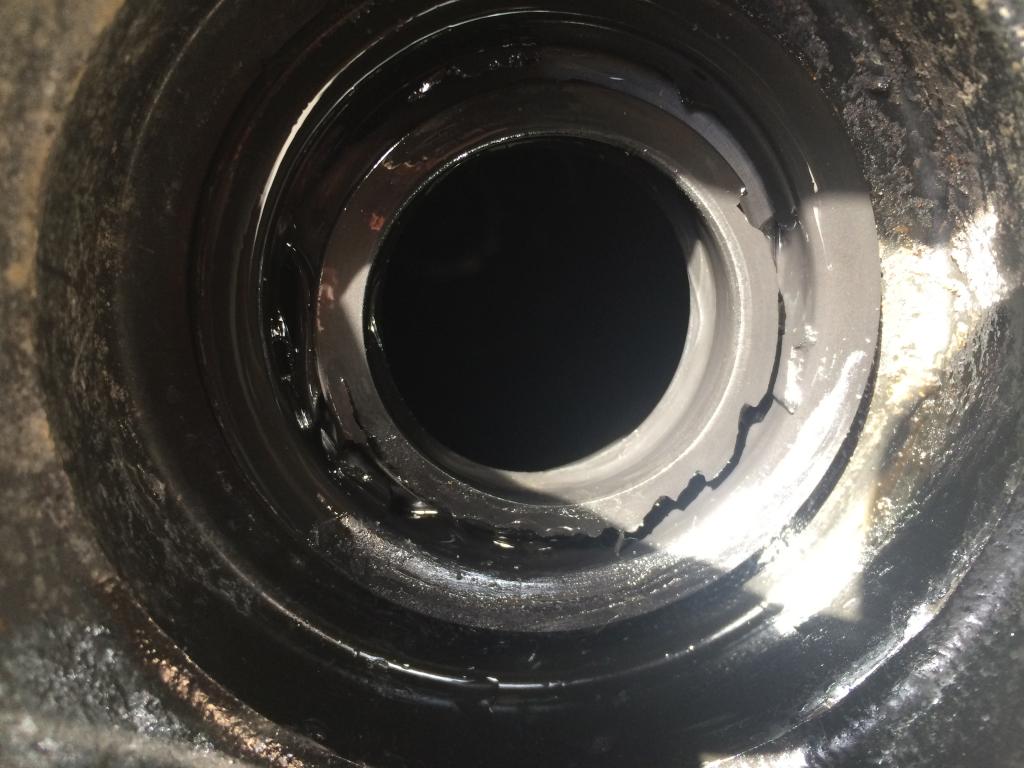
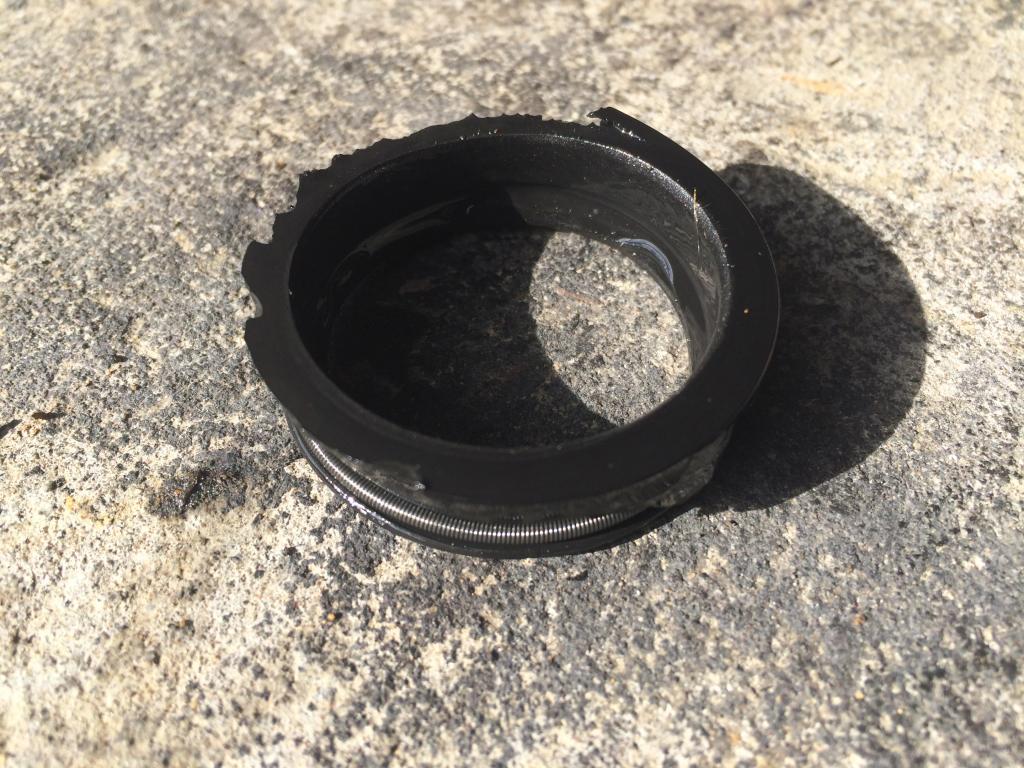
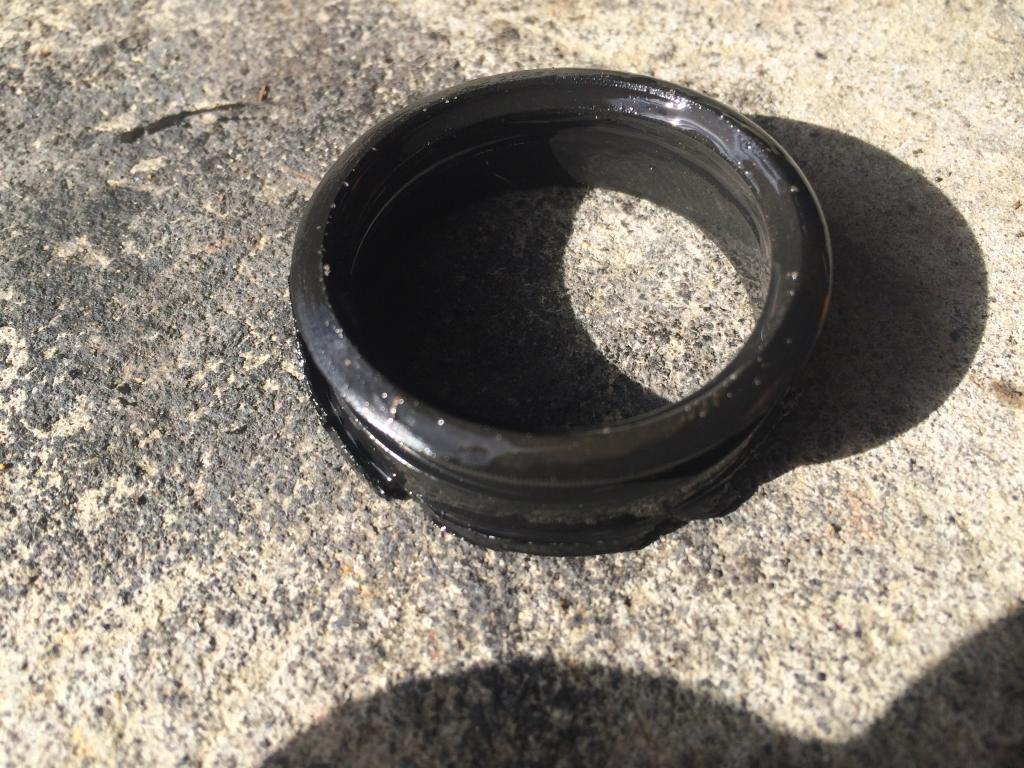
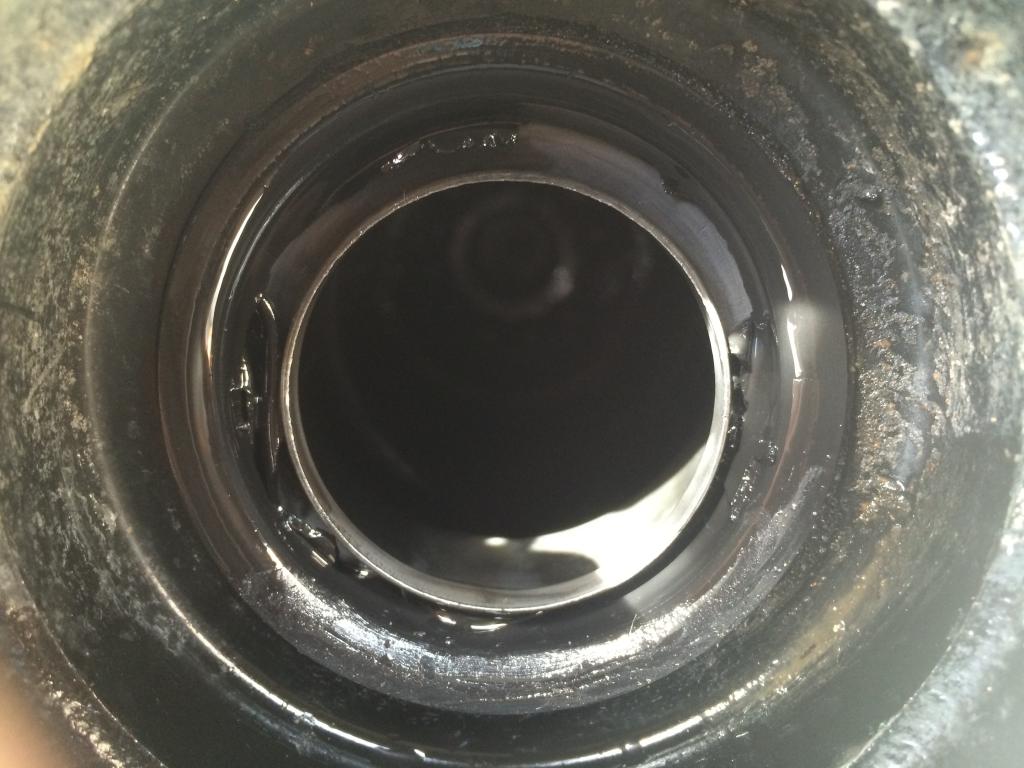
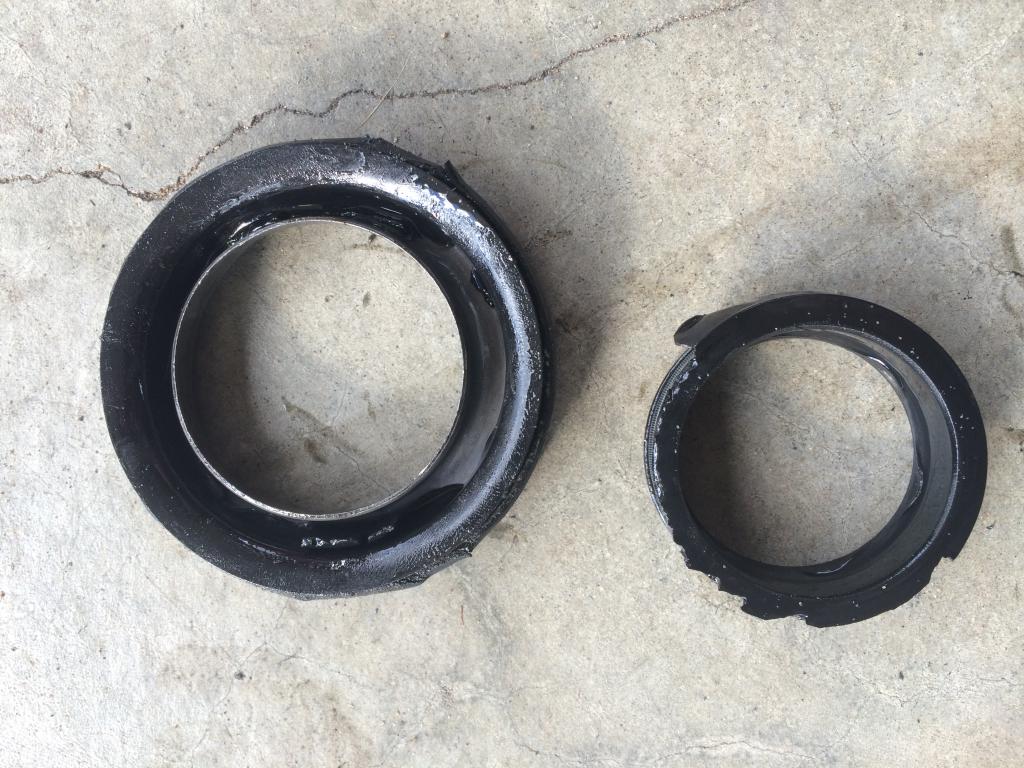
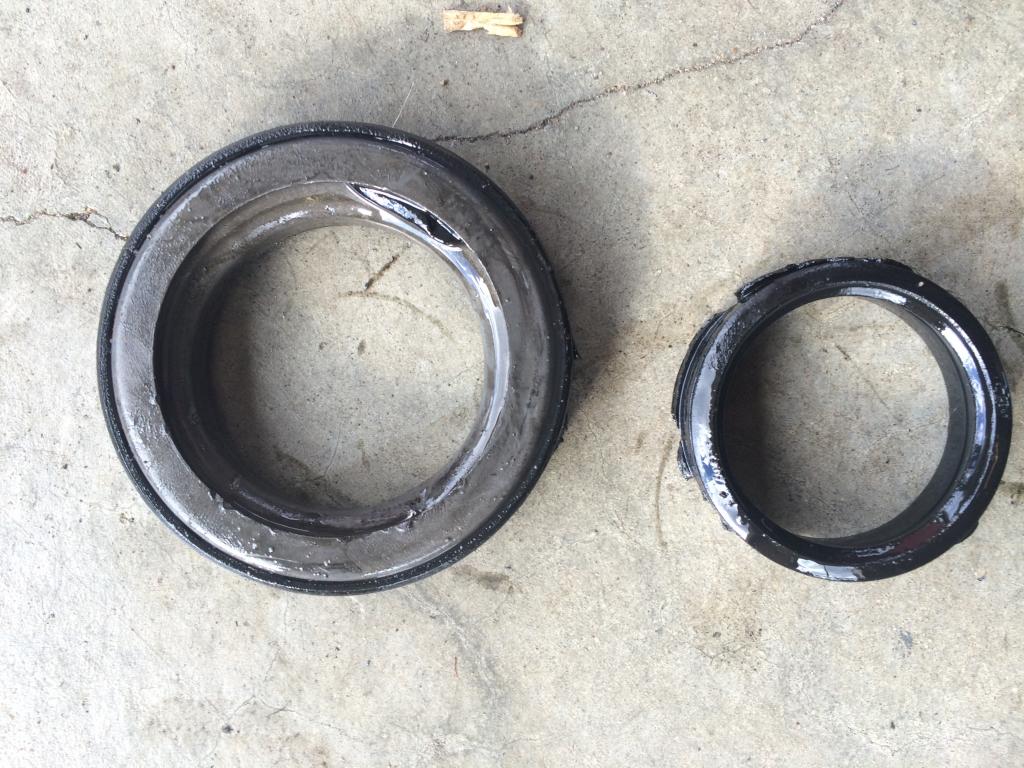

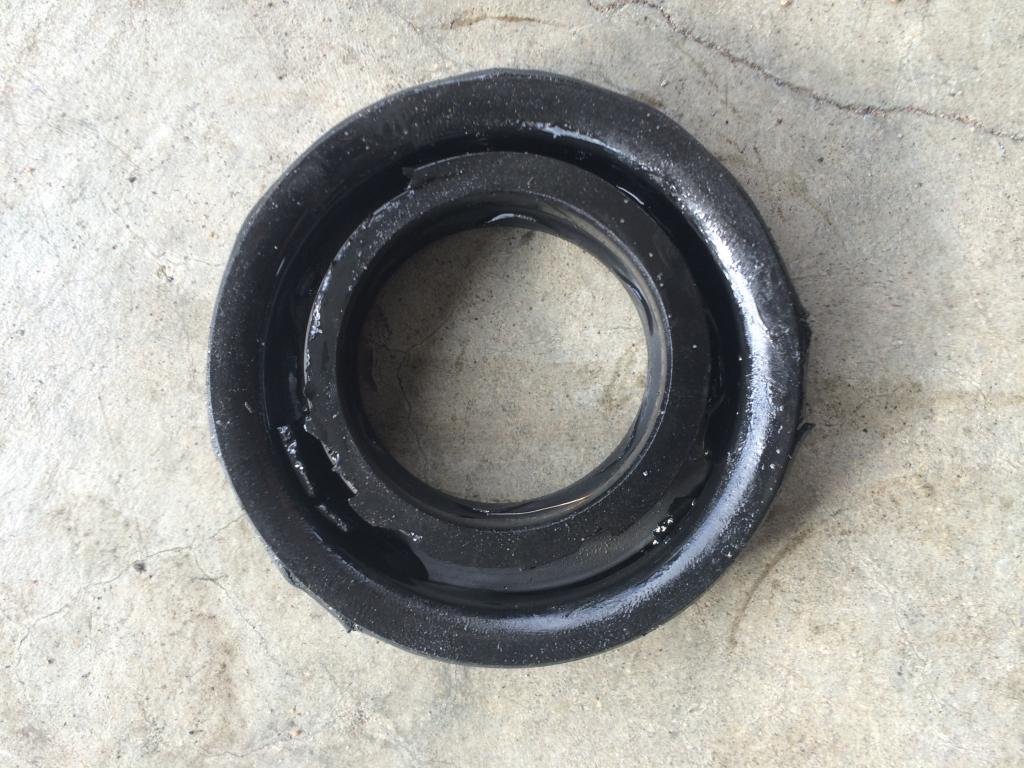
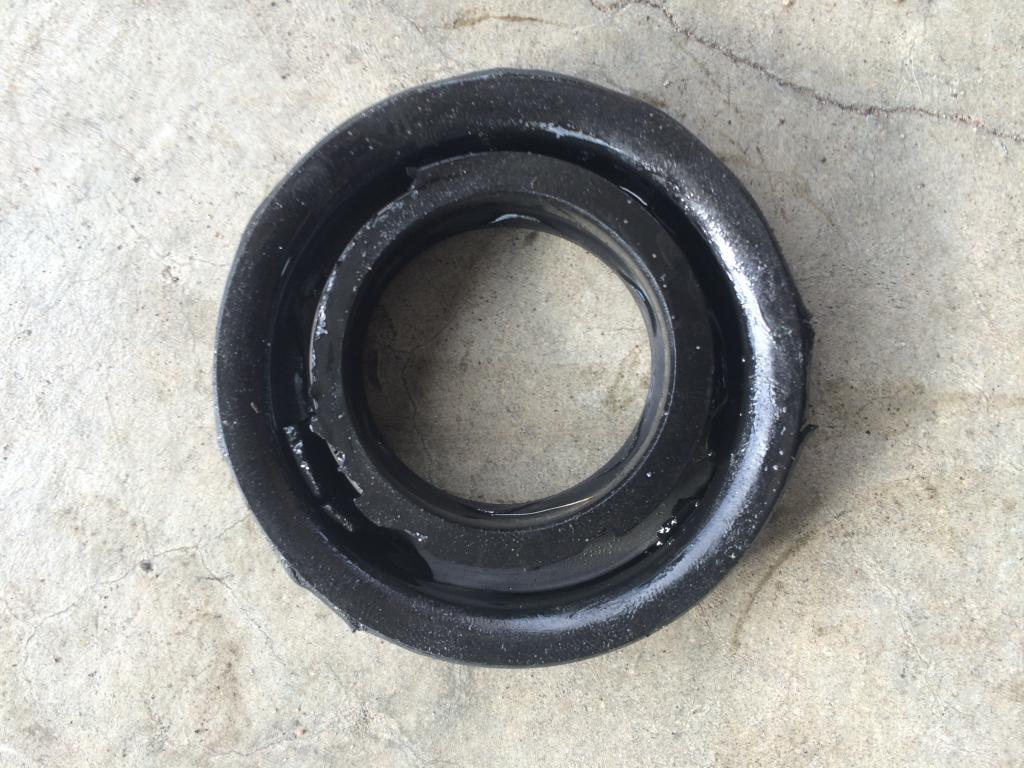
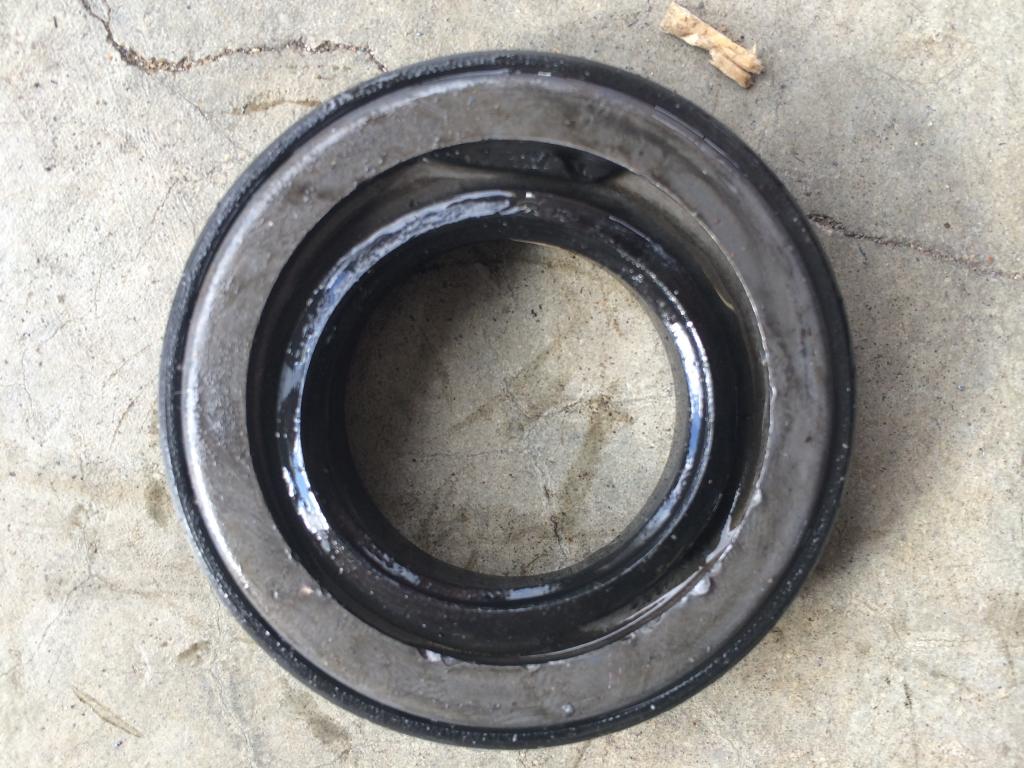
With the driveshaft out and cleaned up and the new AllMakes4X4 seal (supplied by Ritter - < Ritter Australia - Home of Land Rover Service, Sales and Parts - Ritter Australia >) I can feel the point that the internal hole in the seal starts to catch/rub/friction on the collar of the dust shield as it's pushed on. It's visibly clear that there is no clearance between the collar of the shield and the body of the seal:
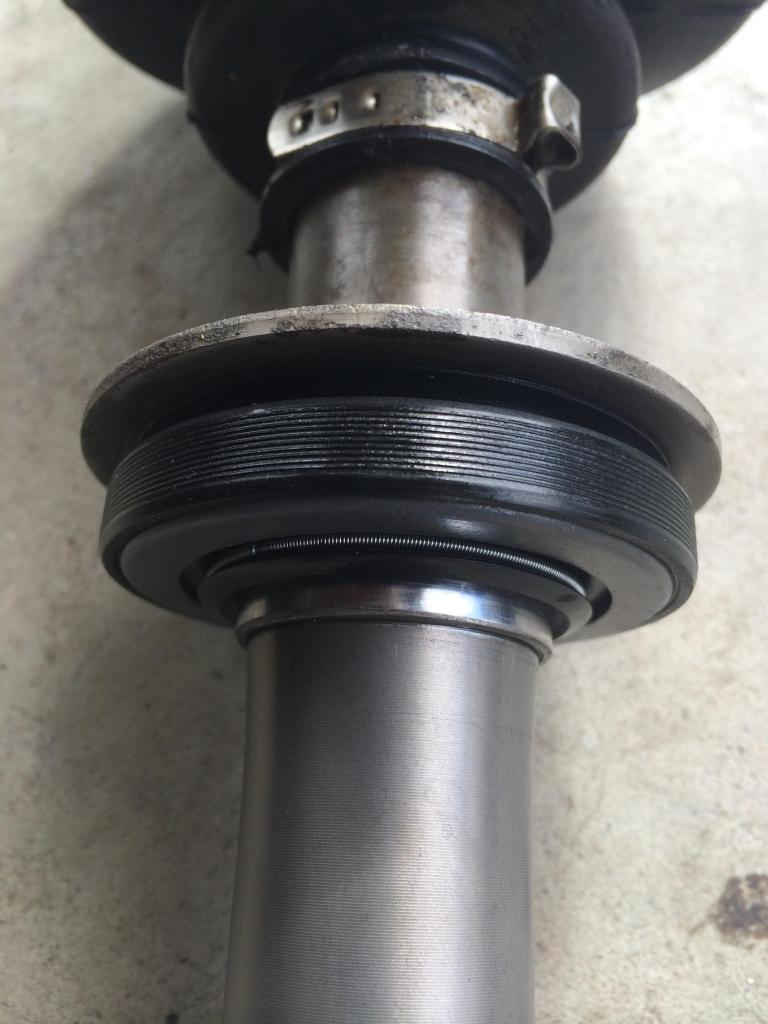
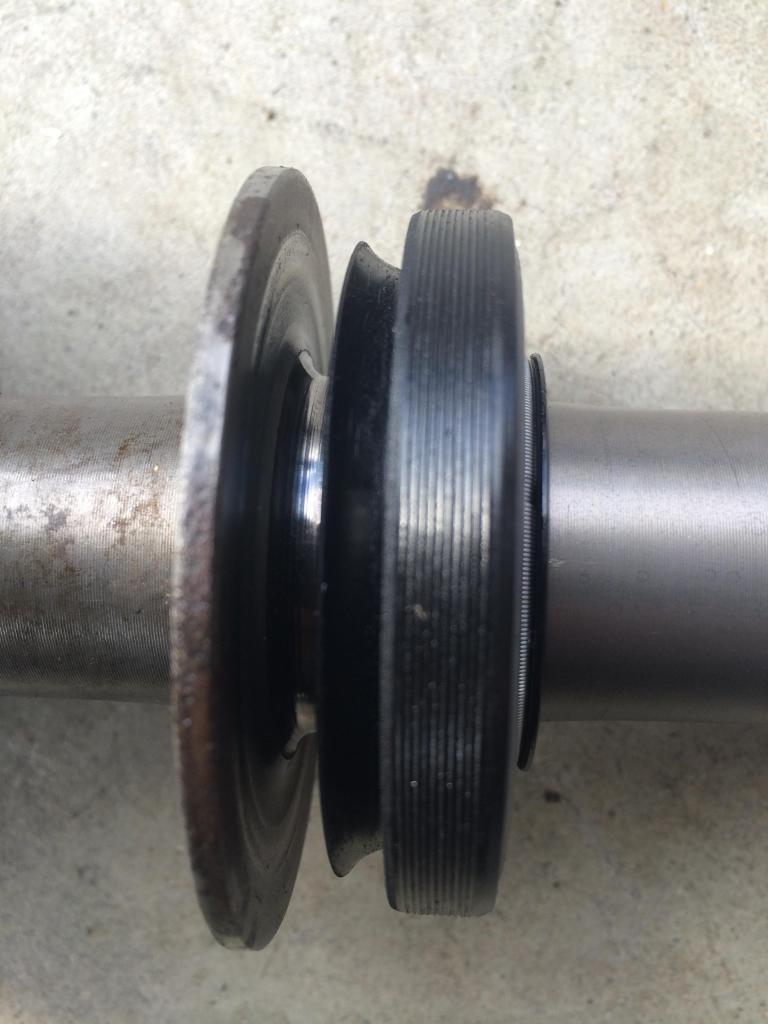
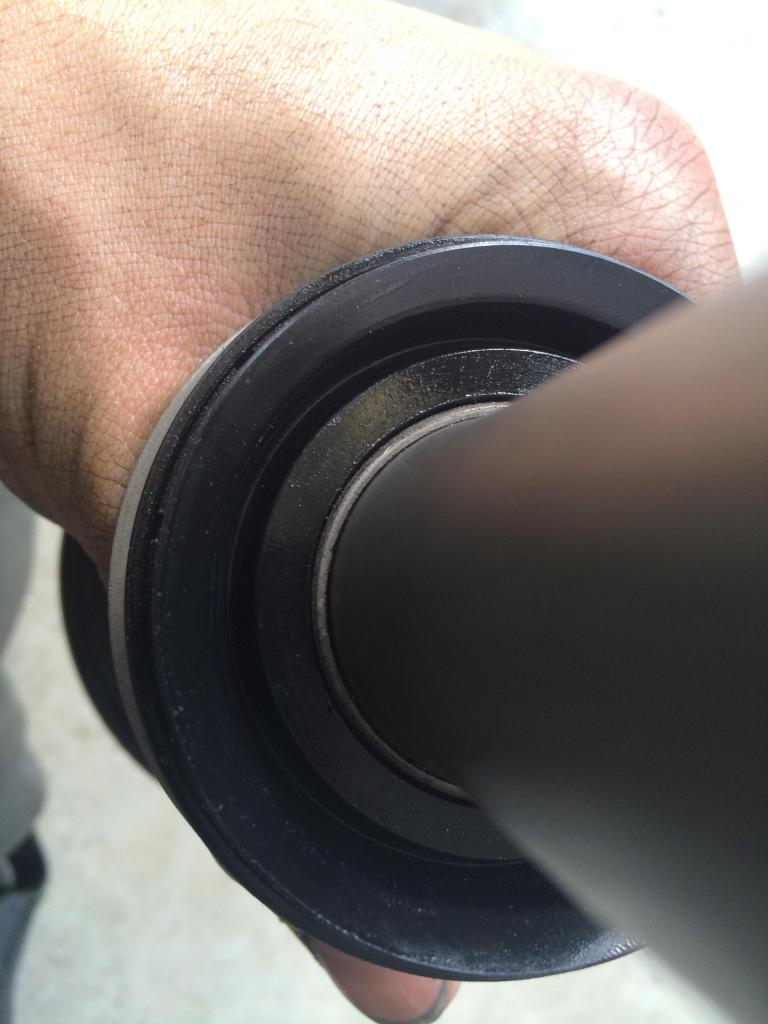
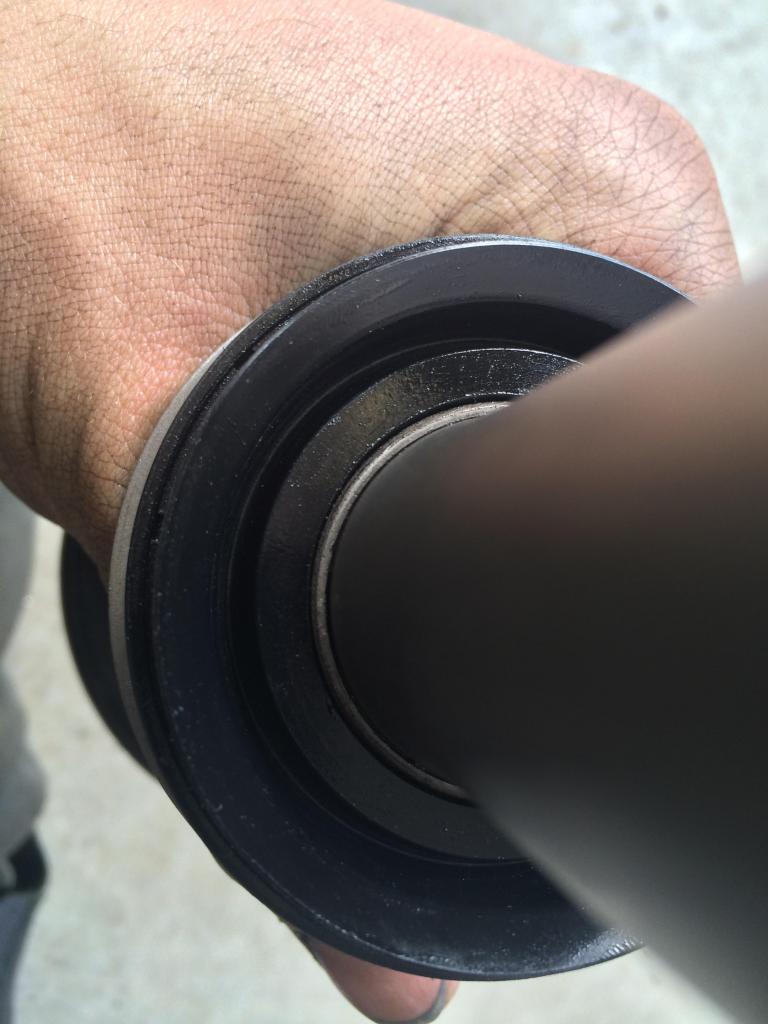
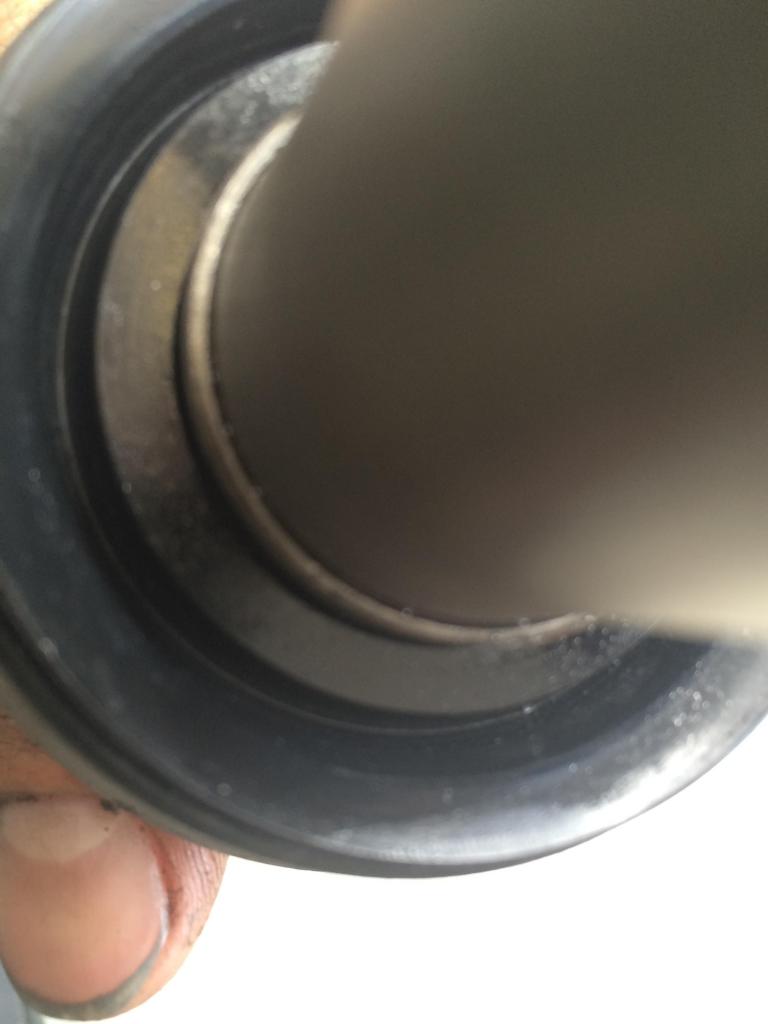
Whilst my driveshafts are Ashcroft brand the shields are the genuine Land Rover items removed from the original driveshafts - so the problem would likely still be the same if I was using my original shafts.
#13
Some may be interested to read the discussion at D2BC.co.uk • Login where some other D2 owners are having the same issue due to the same cause of the seal sizes.
#14
Another good thread for anyone interest in this further is Ashcroft HD CV shafts and front diff seals - leaking? - Page 5 - Australian Land Rover Owners
#15
And another one - D2BC.co.uk • Login
Seeing a pattern forming?
Note that the effected users are from all various parts of the world too.
Seeing a pattern forming?
Note that the effected users are from all various parts of the world too.
#17
If you are trying to imply that the Ashcroft CV's are the cause that was my first thought (see Ashcroft HD CV shafts and front diff seals - leaking? - Australian Land Rover Owners ). However, I quickly discovered that there were numerous other users, around the globe, having the exact same issue - some also with Ashcroft CV's fitted and some still with the standard CV's.
I'm not sure how familiar you are with Ashcroft CV's for the D2, but they do not come with the shield. As you know, the shield is the item that goes through the centre of the seal. So Ashcroft CV or OEM CV, you are still using the exact same shield. It is still the same parts touching the seal. There's no change is sizing between the Ashcroft CV or OEM CV that effects the seal.
#18
It is also both side on mine that have failed in the exact same manner. The chances of one shaft being out I would accept, but the chances of both is less.
The original seals were removed and replaced when the new CV's were fitted.
Others who have left their original seals in and fitted the kit have not experienced this issue.
As you may be aware, these seals were originally on the P38A Range Rover - the seals were originally part number FTC 3452 though. I found the TSB regarding the changeover from FTC 3452 to FTC 4822. It dates back to 30/10/1996 and is in relation to Range Rover (P38A I assume?) owners complaining about oil leaks at the front. So what LR did was make the seal in two parts so that it has the ability to have some movement - that's why the body of the seal is now the two metal parts.
The first page of the TSB is viewable at http://www.jeepolog.com/forums/attac...0&d=1397899310
There's a good description of the change in RangeRovers.net Forum
The revised design mentioned in the TSB is significantly different.
There is the inner ring, which seals to the shaft, the outer ring which seals to the axle tube, and joining them is a thin flexible membrane that allows the shaft and it's snug seal to float about in relation to the tube, all the time maintaining the total oil tightness.
There is the inner ring, which seals to the shaft, the outer ring which seals to the axle tube, and joining them is a thin flexible membrane that allows the shaft and it's snug seal to float about in relation to the tube, all the time maintaining the total oil tightness.
#19
Out of which post? Whilst I don't deny it being true, I'm not understanding your emphasis on it?
If you are trying to imply that the Ashcroft CV's are the cause that was my first thought (see Ashcroft HD CV shafts and front diff seals - leaking? - Australian Land Rover Owners ). However, I quickly discovered that there were numerous other users, around the globe, having the exact same issue - some also with Ashcroft CV's fitted and some still with the standard CV's.
I'm not sure how familiar you are with Ashcroft CV's for the D2, but they do not come with the shield. As you know, the shield is the item that goes through the centre of the seal. So Ashcroft CV or OEM CV, you are still using the exact same shield. It is still the same parts touching the seal. There's no change is sizing between the Ashcroft CV or OEM CV that effects the seal.
If you are trying to imply that the Ashcroft CV's are the cause that was my first thought (see Ashcroft HD CV shafts and front diff seals - leaking? - Australian Land Rover Owners ). However, I quickly discovered that there were numerous other users, around the globe, having the exact same issue - some also with Ashcroft CV's fitted and some still with the standard CV's.
I'm not sure how familiar you are with Ashcroft CV's for the D2, but they do not come with the shield. As you know, the shield is the item that goes through the centre of the seal. So Ashcroft CV or OEM CV, you are still using the exact same shield. It is still the same parts touching the seal. There's no change is sizing between the Ashcroft CV or OEM CV that effects the seal.
Thread
Thread Starter
Forum
Replies
Last Post



